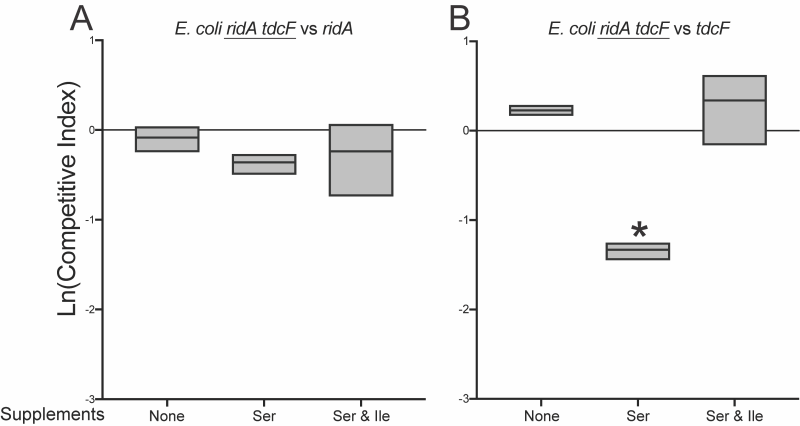Back to article: RidA proteins contribute to fitness of S. enterica and E. coli by reducing 2AA stress and moderating flux to isoleucine biosynthesis
FIGURE 5: RidA contributes to the competitive fitness of E. coli. Shown are competitive fitness values for an E. coli ridA tdcF double mutant (∆ridA890 tdcF13::Cm) grown in coculture with (A) an E. coli ridA mutant (ridA790::Km) or (B) a tdcF mutant (tdcF12::Km) in minimal glucose (11 mM) medium with the indicated supplements. L-serine was provided at a final concentration of 5 mM and L-isoleucine each provided at 1 mM. Data shown are mean and standard deviation of three independent biological replicates. The underlined genotype indicates the strain for which the CIs are shown in the corresponding graph. An asterisk (*) indicates a significant difference (p ≤ 0.05 as determined by Sidak’s multiple comparisons test) in CI values compared to control experiments in which ∆ridA890tdcF13::Cm was competed with an isogenic strain also lacking ridA and tdcF (∆ridA890 ∆ tdcF14) under each condition.

